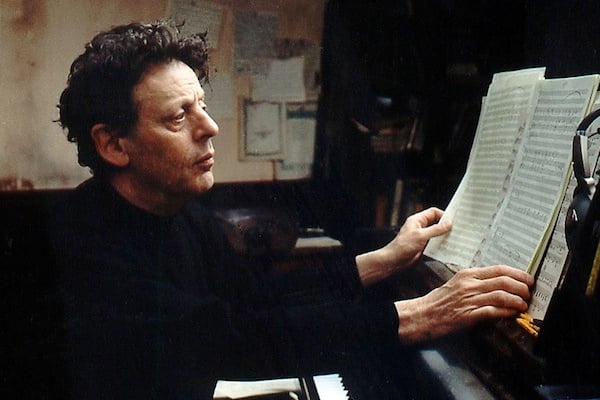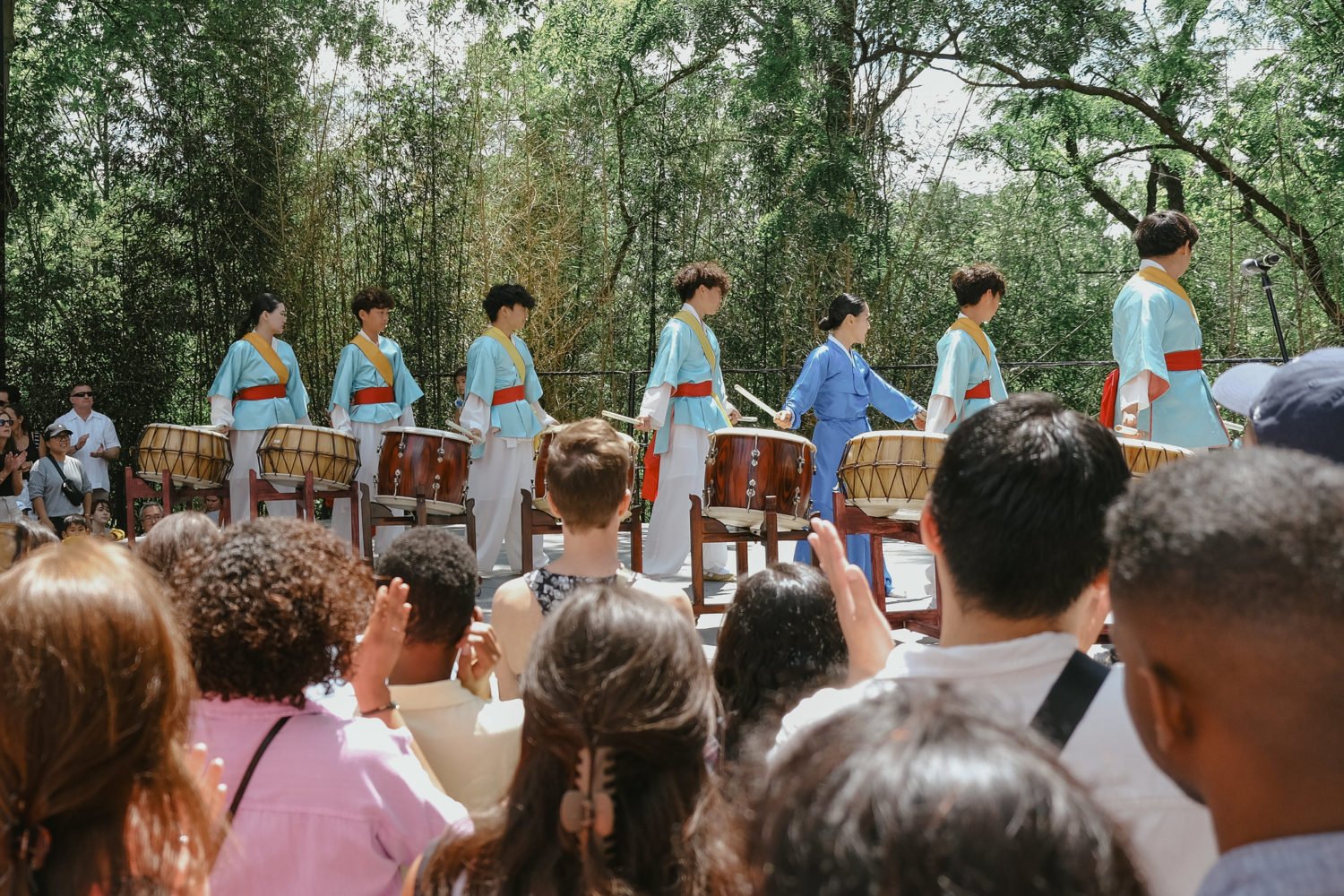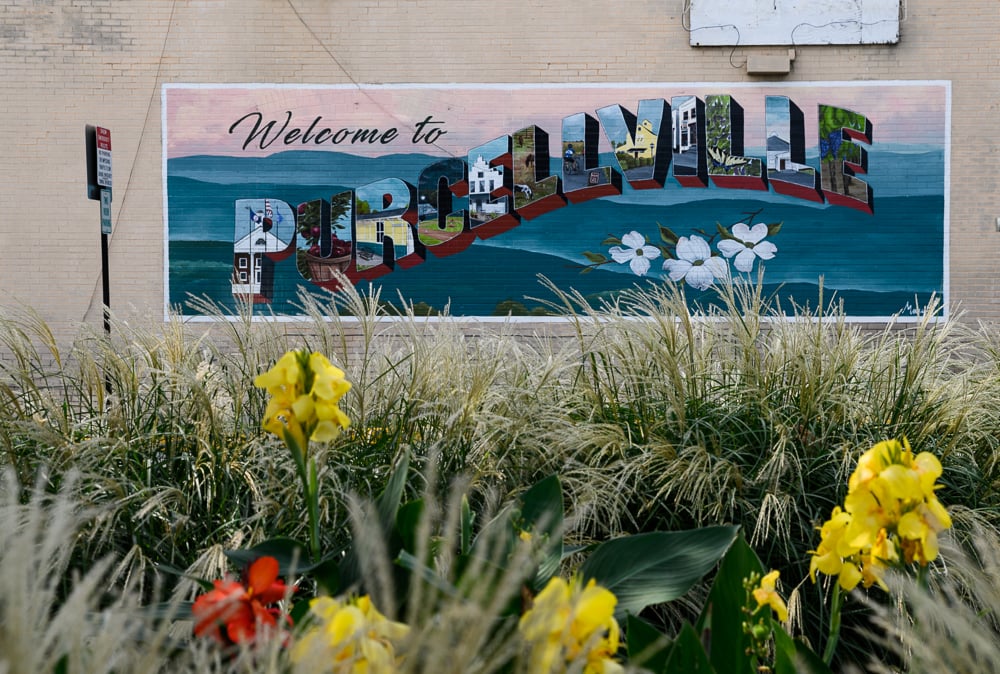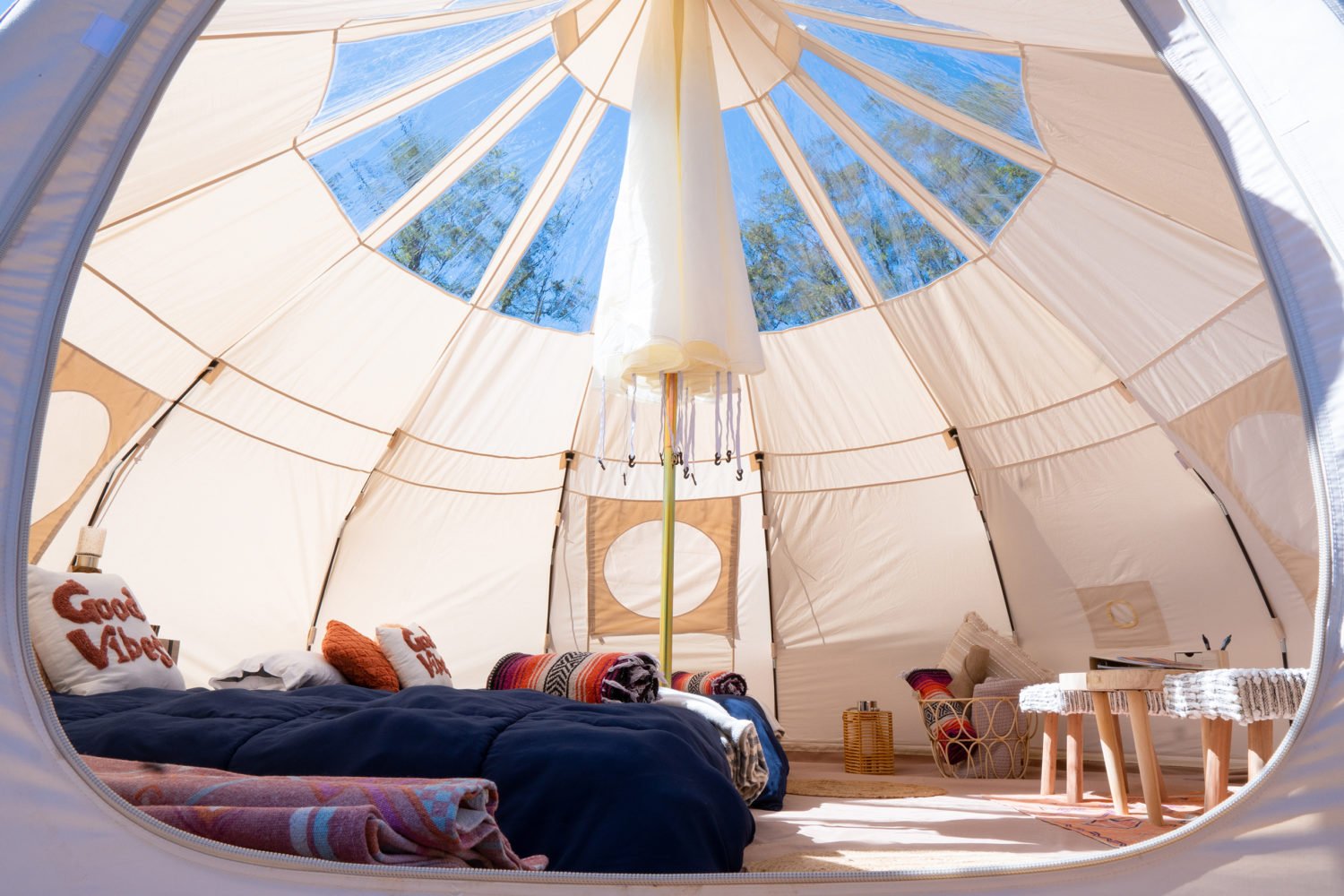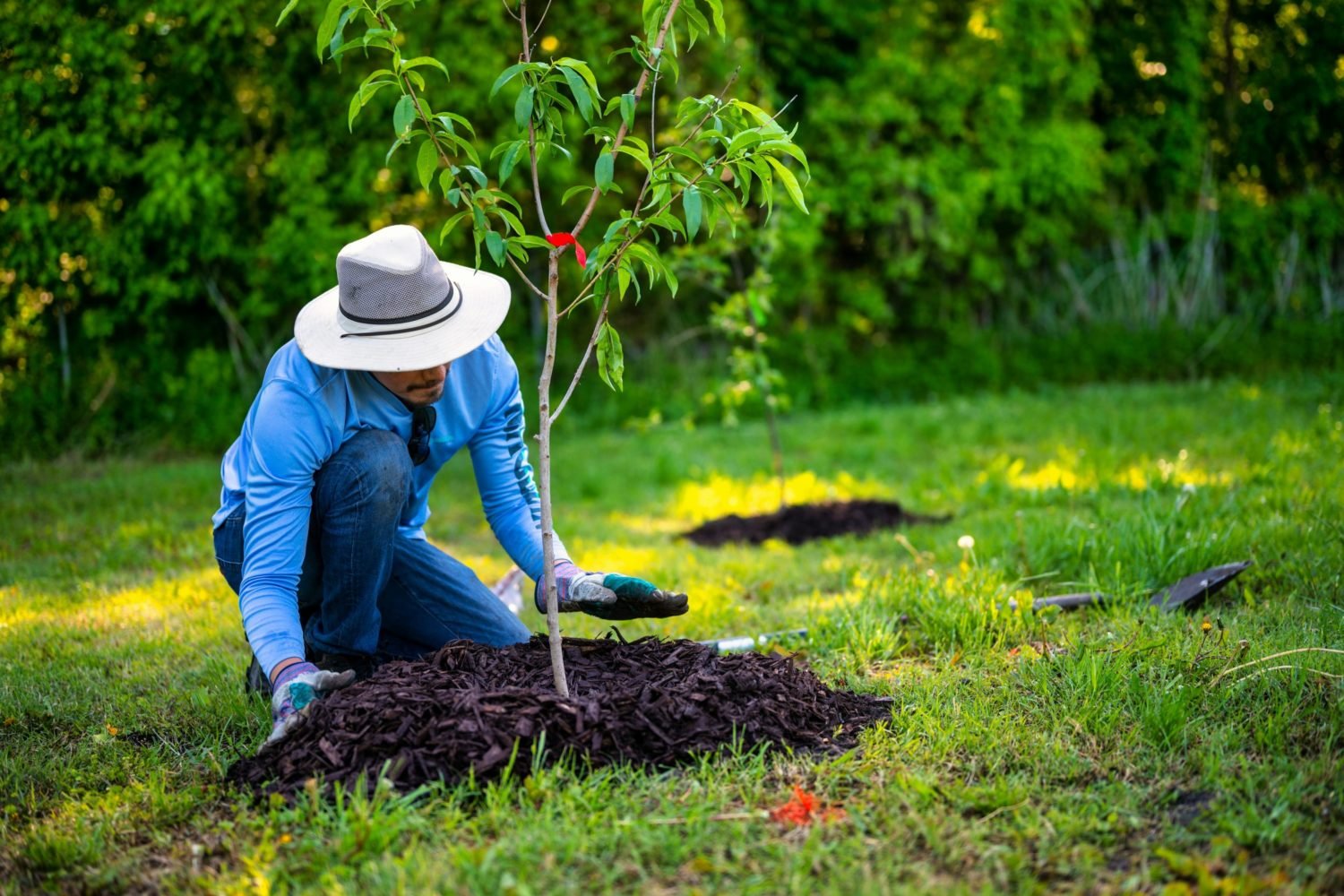Composer Philip Glass performed at the Phillips Collection on Sunday. Photograph courtesy of the Phillips Collection
Let’s just say this up front: Philip Glass is not a virtuoso pianist. Technical ability was not the reason he drew a full audience to the Music Room at the Phillips Collection on Sunday afternoon, to kick off a new season of concerts. Glass was there to play his own compositions, in the simplified, repetitive style—call it minimalism, although Glass does not like the term—that has made him famous. This style can be found in his film scores ( Koyaanisqatsi and Notes on a Scandal, among others) and his ground-breaking operas ( Einstein on the Beach and Satyagraha, for example). Glass also spoke about the pieces he played during the course of the recital and in a post-concert talkback session with the audience. The Q&A was led by Caroline Mousset, the director of the museum’s music program. Somewhere between what he said and what he played, in spite of the uneven technique and sometimes halting rhythm, the performance became quite compelling. Glass will turn 75 this January, and one had the sense of being in the presence of someone who had made an immense mark on the course of music history.
All of Glass’s music is essentially the same: He begins with the pulse of a repeated pattern, then layers on other patterns that add rhythmic complexity, creating a harmonic pattern that is the basis for variation, not unlike the chacona and passacaglia ostinati used in earlier music. It has struck me many times before that Glass did his best work in the 1970s and ’80s, the heyday of his creative energy, and that was also the case here. The best piece on the program, Mad Rush, dates from 1979. The piece was first performed on organ the organ for the Dalai Lama’s visit to New York in 1981. As adapted for piano, it features a simple Alberti bass sort of pattern in the left hand, contrasted with sextuplets in the right, with the thumb of the right hand jabbing out a jazzy, syncopated rhythm. The tumult of faster notes in the B section, which returns a couple times, gives the piece its name. The opposition of energy and stasis in the two musical ideas was compelling.
Almost as pleasing, with a little more hypnotic intensity, were the first four movements of Metamorphosis, all pieces that bore a strong similarity in their harmonic patterns to those chacona and passacaglia pieces mentioned earlier. The exact sequence of chords, always centered on a minor “home chord,” changed from piece to piece, as did the details of meter (really, meters, as they overlapped and transformed), volume, and texture. Like the chacona, these pieces can start to rewrite the neurons in your brain after enough time listening to them: At one point, the panels commissioned from abstract painter Augustus Vincent Tack by Duncan Phillips for the Music Room—reinstalled for a few months as they were intended—started to glow and spin in my mind’s eye, in synesthetic vibration.
Six selections from Glass’s set of piano etudes he had begun in 1994 and not yet completed were the least satisfying, perhaps because they were the most didactic. Glass explained after the concert that he wrote these pieces to zero in on deficiencies in his own playing, and they did tend toward dry aridity in terms of musical ideas. This is not to say that Glass plays mechanically, which is how one often thinks of his music. Far from it—he stretched the tempo with considerable rubato, to cover some lapses in his playing but also for musical reasons.
Glass remarked that his piano pieces are the most personal things he has written, music written for himself to play and often never published, although sometimes recorded. As he plays them, he finds himself pedaling them differently, shifting the dynamics around, even perhaps lengthening or shortening sections. This might have been frustrating if it came from any other pianist playing this music, but with Glass playing it himself, the ideas coming from the source heightened the effect.
The Phillips Collection concert series continues through next May, with concerts on most Sunday afternoons at 4 PM. In my season preview I picked some of the most attractive options, including the debut of the museum’s new resident chamber music ensemble, the Phillips Camerata, scheduled for next week (October 9, 4 PM).

